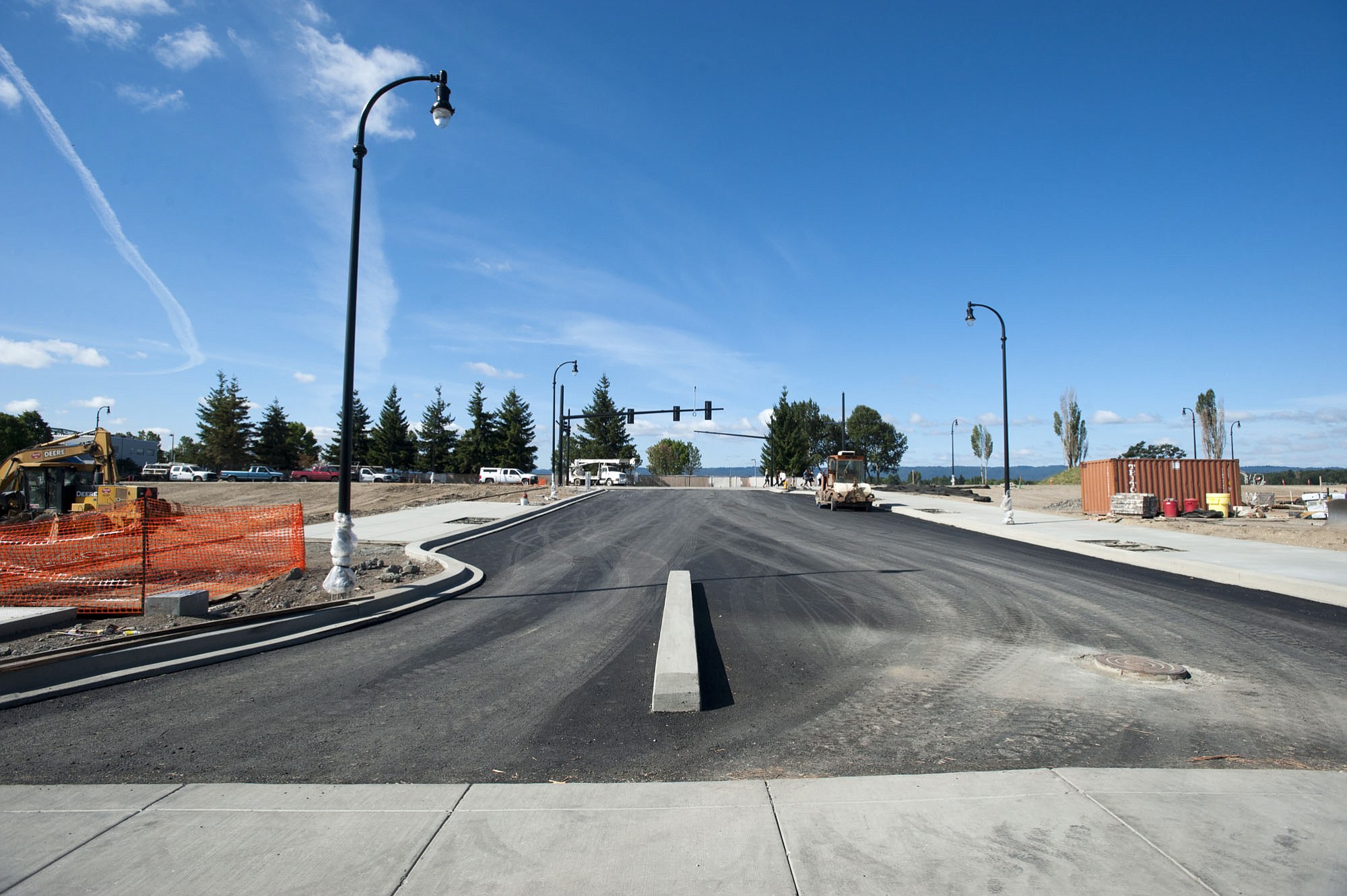The city of Vancouver and a private developer want to revise their 2009 agreement to redevelop the Columbia River waterfront, proposing changes that would create a financial incentive to start erecting buildings sooner than later.
“With the passage of six years and actually getting to the stage of building on the site, we’re re-looking at our roles and responsibilities. We’re re-aligning those to what makes sense in the current environment,” City Attorney Bronson Potter said Tuesday. “Things are different now.”
The proposed agreement sets a two-year deadline for the developer to begin construction in exchange for repaying millions of dollars owed to the city over a longer time frame.
On Monday, Potter and Barry Cain, president of the Tualatin, Ore.-based company Gramor Development, presented several recommendations for altering the development agreement to the City Council. The council will hold a public hearing and take a vote on approving the amendments Aug. 3. Columbia Waterfront LLC, is a private investors’ group led by Gramor Development.
Columbia Waterfront wants to extend the 20-year term of the original development agreement for the project to 25 years because the recession delayed construction. The agreement binds the 32-acre property with the overall project master plan, development goals, open space and street layout.
Here are some of the requested changes to the development agreement:
• At the developer’s request, Columbia Waterfront’s payment schedule to the city for an $8 million off-site access construction project (which included vehicle underpasses beneath the railroad tracks) would be extended to provide the developer with more cash flow for designs, plans and permits.
The city is proposing allowing Columbia Waterfront to pay the $5.8 million it still owes over a 13-year-period on the condition the first phase of the project is launched within two years. The original agreement had called for repayment on a tighter timeline but with no construction deadlines.
The city felt that in exchange for the payment flexibility, it was reasonable for the city to issue a deadline for the start of construction, Chad Eiken, the city’s community and economic development director, said Wednesday.
“When we say commence construction, they have to prove to us they have they financing to build Phase 1,” Potter said. “We want to see buildings come out of the ground.”
The city is also willing to extend the repayment schedule because it received a federal Housing and Urban Development loan to build the off-site access project, and HUD gave the city a 15-year extension rather than require repayment in full this year, Potter said.
The developer’s first development proposal, submitted to the city in a pre-application request, had indicated construction on the first phase of the project would begin this fall. Eiken said he’s optimistic Columbia Waterfront LLC will begin construction in the first quarter of 2016.
To hit that time window, the developer needs to apply for permits and get approvals “fairly soon,” Eiken said, “but the market conditions seem pretty ripe for development down there, from what we’re seeing elsewhere.”
• Flexibility of ground-floor building design would be increased by decreasing the required amount of windows, doors and “interest-creating features” from 75 percent to 50 percent on all streets. Due to the irregular configuration of the city blocks, the developer felt 75 percent was too extreme because it doesn’t take into account the need for service areas where there can’t be windows, such as recycling and trash collection spots, storage areas and rooms with electrical and fire controls.
Eiken added Wednesday that the state energy code requirements make it more difficult to use glass on all four walls of a building. For instance, on a restaurant building with expansive waterfront views, not as much glass could be used on the rear face due to energy code requirements, he said.
• Columbia Waterfront would pay the city an additional $3 million in exchange for the city constructing Columbia Way (cost: $2 million) and core waterfront park improvements ($1 million). Originally, Columbia Waterfront was to build the city park and all the streets on the site, but it made more sense for the city to build them because grant money was available, and the streets are city-owned, Potter said.
• The city and Columbia Waterfront would jointly develop maintenance standards for the city’s 7-acre park. Columbia Waterfront would pay the city for 30 percent of annual maintenance costs.
• Public restrooms that serve a planned city park would be allowed to be built as stand-alone buildings rather than be located inside one of the future waterfront buildings.
• All buildings that originally were supposed to be built to LEED Silver or equivalent standard could be built to a comparable standard using another sustainability program. Attaining the LEED standard is expensive and can be cumbersome. Instead, Columbia Waterfront would use the Green Globes and Earth Advantage programs. This change would provide flexibility but wouldn’t affect the look of the buildings, Cain told the City Council.
“The sustainability criteria is something we’re very concerned about,” he said Monday. “You can bet we’ll come out at the top of the scale.”
• The final change would allow for parking within the first 90 feet above the ground floor if buildings are adequately screened so they don’t look like parking garages. Cain said it was proving more difficult than expected to dig down three levels for underground parking.
In addition, Columbia Waterfront plans to eventually build a half-block “pocket park” on Lot 15 of the development, which initially will be used for parking. Columbia Waterfront would own and maintain it.
The roads, curbing and utilities in the $1.3 billion private-public redevelopment project are in place, and over the next few weeks, workers will finish installing streetlights and traffic signals, pouring the rest of the sidewalks and planting landscaping.
Commercial buildings with restaurants are scheduled to start rising around next March. Among the first structures to go up will be two waterfront buildings with restaurants, a 14-story apartment building with 150 units, a condominium building of up to 15 floors and more than 100 units, and a six-floor office building.
“We’ve got a really good working relationship with the developer, and I think the success of this project is both in the city’s and the developer’s interest,” Eiken said. “Although we might disagree on some of the smaller issues, we’re both keeping the big goal in sight, which is to have a vibrant waterfront.”




